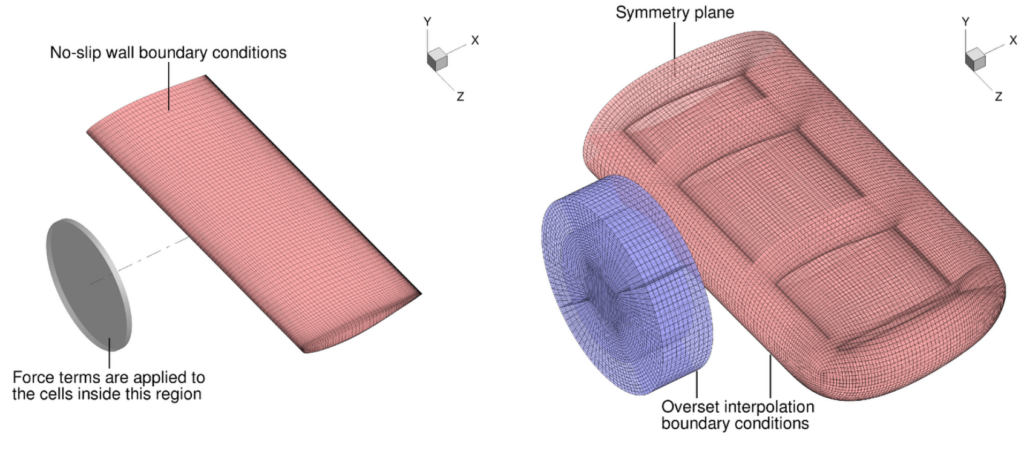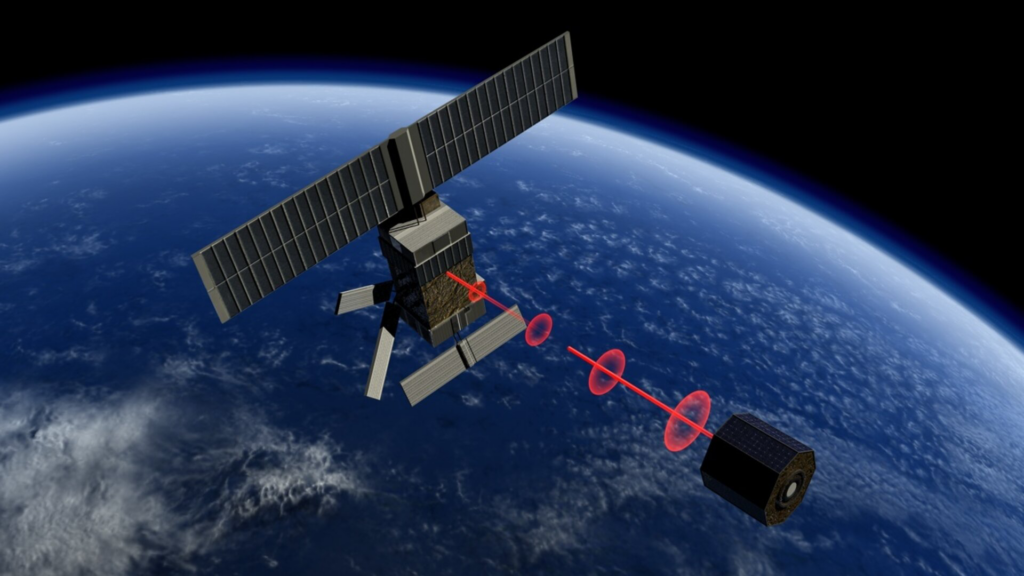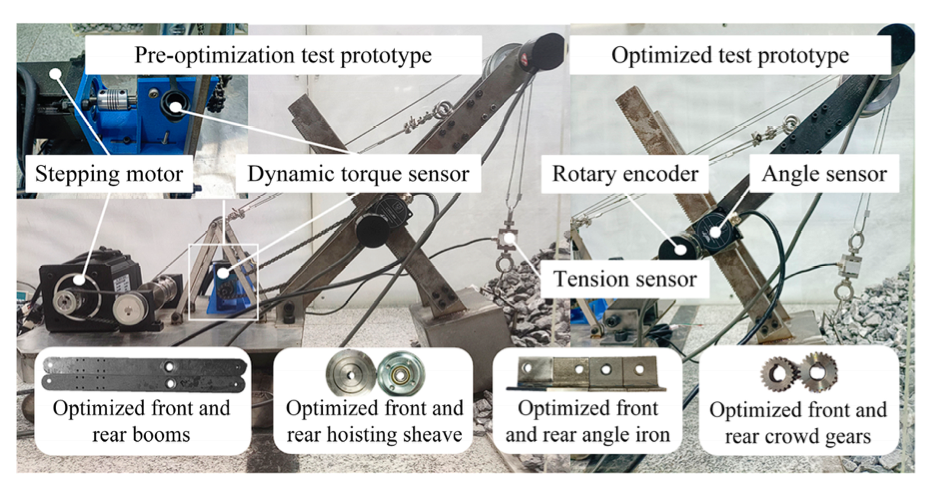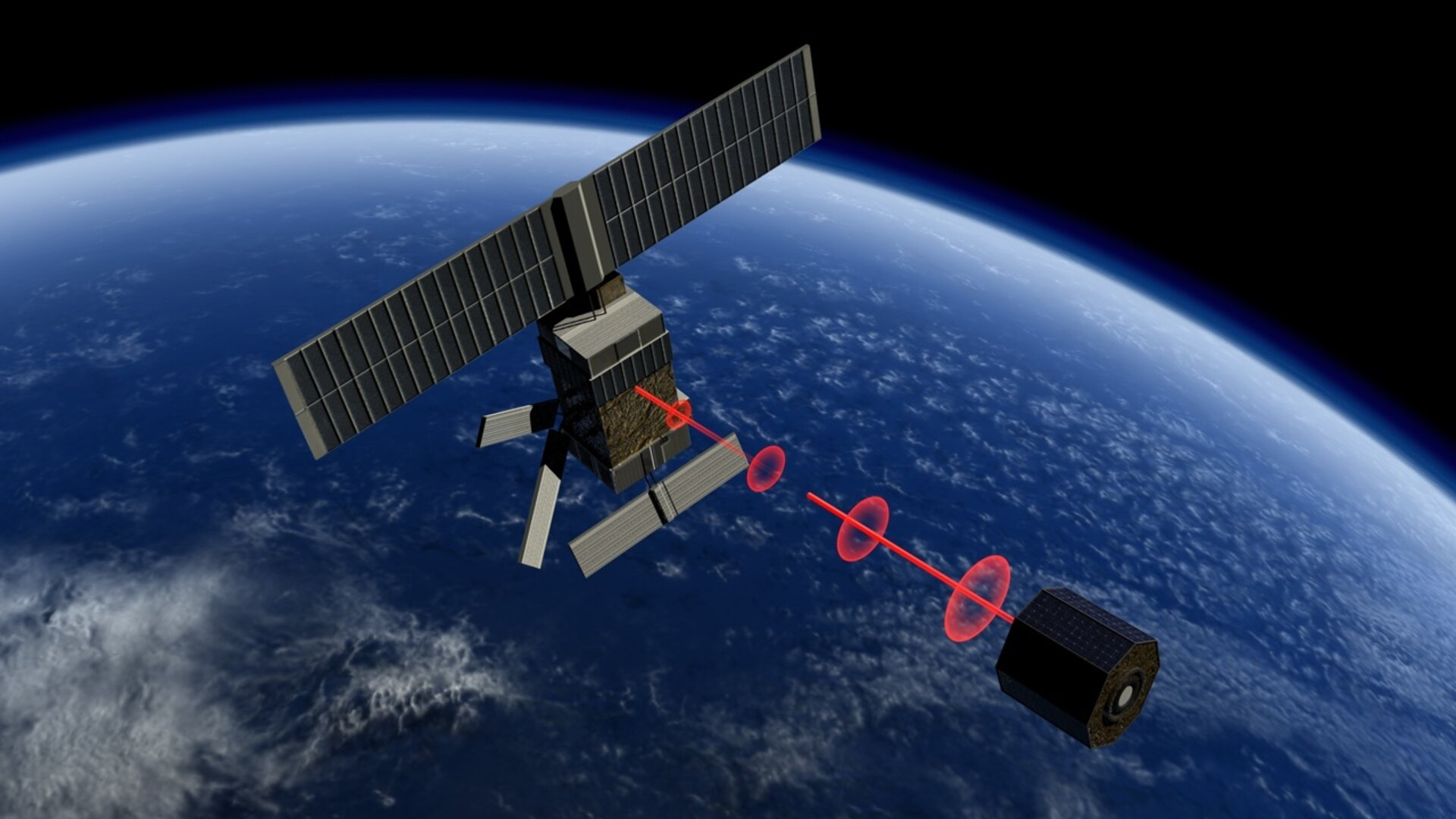Discover State-of-the-Art MDO that Transforms Your Industry
Introduction
Multidisciplinary Design Optimization continues to be one of the most actively researched areas in applied sciences and engineering. Even though it’s only September, we’ve already seen remarkable advancements in MDO this year.
In this article, I’ll showcase five notable applications across different industries, exploring the design challenges, key outcomes and innovative approaches behind them. I hope these examples spark inspiration and perhaps offer strategies you can apply to transform your own projects!
RANS-Based Aerodynamic Shape Optimization of a Wing with a Propeller in Front of the Wingtip

Context:
The paper explores the aerodynamic shape optimization of an aircraft wing with a propeller located in front of the wingtip. The primary challenge is minimising aerodynamic drag in the presence of a propeller, which interacts with the airflow around the wing and affects overall performance. Accurately capturing these effects in simulations for design optimization is a major issue.
Design optimization problem:
The objective is to minimise the drag of the wing by optimizing the twist and airfoil shape, subject to geometry constraints and cruise conditions typical of general aviation and commuter operations.
Key results:
The study revealed that changing the propeller’s rotation direction (~67 drag counts) alongside the optimization of the wing twist and airfoil shapes (~12 drag counts) led to substantial drag reductions. However, including propeller slipstream effects in the optimization contributed only marginally to drag reduction (~less than one drag count).
Highlights:
The authors used a gradient-based optimization algorithm combined with RANS simulations, which provided high accuracy in modelling airflow around the wing. Accounting for propeller-wing interactions during the optimization was essential for capturing realistic aerodynamic behaviour and improving performance.
Reference: **Chauhan, S.S. and Joaquim, J.R.R.A. (2024). RANS-Based Aerodynamic Shape Optimization of a Wing with a Propeller in Front of the Wingtip. Aerospace, 11(7), pp.512–512. doi:https://doi.org/10.3390/aerospace11070512.
Multidisciplinary Design Optimization of Active Debris Removal Mission via Electric Propulsion

Context:
The paper focuses on space mission design for active orbital debris removal, particularly addressing the growing challenge of space debris in sun-synchronous orbits, which poses risks to satellites and space operations. The primary challenge lies in minimising life cycle costs and mission time while navigating the complexities of design options and unpredictable factors such as fuel price volatility and thruster performance variations.
Design optimization problem:
The problem is initially framed as a single-objective optimization to minimise the mission’s life cycle cost, with respect to mission time and thruster design. This is later expanded into a multi-objective optimization to evaluate the trade-offs between cost and time, particularly under the influence of xenon price volatility.
Key results:
The optimal design using xenon Hall thrusters yields a $354 million mission lasting 4.12 years. High-power xenon thrusters reduce mission time to 1 year at a higher cost of $687 million, while krypton thrusters offer a cost-effective alternative with competitive mission performance.
Highlights:
A fractional factorial design of experiments was used to explore the design variables and output space. Pareto fronts from a weighted-sum genetic algorithm highlight trade-offs between cost and mission time, accounting for xenon price volatility.
Reference: **Hofheins, G.C., Kann, E., Mayo-Smith, A., Haji, M.N. and Petro, E.M. (2024). Multidisciplinary design optimization of active debris removal mission via electric propulsion. Journal of Spacecraft and Rockets, 0, pp.1–12. doi:https://doi.org/10.2514/1.A36041.
Multidisciplinary Design Optimization of Underwater Vehicles Based on a Combined Proxy Model

Context:
This paper pertains to the design and optimization of underwater vehicles, specifically addressing high computational time and cost of using CFD simulations to analyse hydrodynamic performance. To overcome this, the paper proposes a combined proxy model with adaptive dynamic sampling that efficiently estimates performance while maintaining accuracy.
Design optimization problem:
The optimization problem is formulated as the minimisation of resistance and energy consumption with respect to vehicle design variables, subject to hydrodynamic conditions.
Key results:
The proposed combined proxy model significantly improved optimization efficiency, reducing both computation time and model error. It outperformed traditional static and dynamic models in terms of accuracy and speed.
Highlights:
The authors employed a collaborative optimization framework with a combined proxy model constructed from Kriging, radial basis function (RBF), and polynomial response surface (PRS) models. The SMOTE algorithm was employed to improve sampling efficiency, while the hierarchical analysis method was used to transform the multi-objective optimization problem into a single-objective optimization problem.
Reference: **Sun, S. and Luo, W. (2024). Multidisciplinary Design Optimization of Underwater Vehicles Based on a Combined Proxy Model. Journal of Marine Science and Engineering, 12(7), pp.1087–1087. doi:https://doi.org/10.3390/jmse12071087.
Multi-Objective Multidisciplinary Optimization of Wave Energy Converter Array Layout and Controls

Context:
This paper focuses on the design optimization of wave energy converters (WECs) for grid-scale energy production. While WEC farms have the potential to generate significant electricity, their implementation faces multifaceted challenges, including not only the technical design but also marine spatial planning to ensure they can coexist with other maritime activities.
Design optimization problem:
The problem is formulated as the minimisation of the levelized cost of energy (LCOE) and the maximum separation distance with respect to geometry, hydrodynamics, layout, control systems and economics, subject to spacing constraints.
Key results:
The optimal designs showed LCOE values ranging from $0.21 to $0.23/kWh with separation distances between 62 and 97 meters. The ideal WEC radius was 4 meters, with q-factors greater than 1 for rhombus-like layouts.
Highlights:
A multi-objective genetic algorithm was employed for optimization, alongside a global sensitivity analysis to evaluate the influence of variables such as wave heading, frequency, and WEC lifetime on design variability. Additionally, an ad-hoc regression model was developed to facilitate trade-offs among different designs in the Pareto set.
Reference: Kapil Khanal, DeGoede, N., Vitale, O. and Haji, M.N. (2024). Multi-Objective Multidisciplinary Optimization of Wave Energy Converter Array Layout and Controls. Renewable Energy. doi:https://doi.org/10.2139/ssrn.4891821.
Multidisciplinary Collaborative Design Optimization of Electric Shovel Working Devices

Context:
This paper focuses on the design optimization of electric shovel working devices, addressing the increasing performance demands of the open-pit mining industry. Poorly designed electric shovel components often lead to structural failures during operation, significantly impacting excavation efficiency. Optimizing these designs is critical to improve performance and safety.
Design optimization problem:
The problem is formulated as minimising hoist and crowd forces while maximising the angle between the wire rope and dipper arm, with respect to mechanical design variables and subject to kinematic performance, structural geometry and boundary conditions.
Key results:
The optimization achieved a 6% reduction in hoist force, an 8.48% reduction in crowd force, and a 4% increase in the angle between the wire rope and dipper arm. These improvements enhanced both operational efficiency and safety.
Highlights:
The authors employed a BLISCO approximate model in a two-level collaborative optimization process, integrating dynamic simulations with finite element analysis. This approach reduced computational load while improving the structural design of the electric shovel working devices.
Reference: Wu, J., Zhao, J., Wang, X. and Lin, B. (2024). Multidisciplinary Collaborative Design Optimization of Electric Shovel Working Devices. Machines, 12(8), pp.520–520. doi:https://doi.org/10.3390/machines12080520.
Summary
The successful application of Multidisciplinary Design Optimization and Multi-Objective Optimization across various industries highlights their immense potential to revolutionise engineering product design. These advanced techniques are increasingly being adopted to give companies a competitive edge. Don’t miss out on the opportunity to stay ahead — start your journey today!
Curious how MDO or MOO can transform your products? Explore our previous articles below and visit our website to learn more about our services:


Leave a Reply